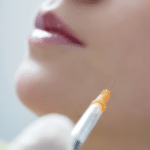What is the Best Age to Start Botox Treatments?
Think you’re too young to get Botox treatments? Think that only ‘older ladies’ resort to Botox after their skin creams stop working? Actually the best age to start Botox treatments is the age at which you start to see those lines on your face. (As a general rule, it’s best to wait until you see lines when your face is at rest, not when you see lines as you smile or laugh.) The beginnings of wrinkles are far easier to treat with Botox, after all. Once those wrinkles get deep and noticeable, Botox can help soften their appearance but your skin has already become deeply grooved as you age and more dramatic lines might not be as ideally minimalized by Botox.
Keep in mind, though, that repeat Botox treatments may be recommended by your physician to keep your face looking smooth and line-free. Your doctor will assess your skin’s appearance, which might be a bit more lined if you haven’t been religiously using sunscreen, if you’re a smoker or if you simply have DNA that leads to more wrinkles. Your doctor will take your age into consideration when your personal treatment schedule is created, keeping you safe and avoiding too-frequent treatments that can atrophy the muscles in your face – causing an aged-looking effect, especially around the eyes, even without wrinkles. (This is why a dermatologist is your best source of Botox, as opposed to a shop that isn’t as well-versed about the effects of too-frequent Botox treatments.)
So if you wish to begin Botox treatments in your 20s or 30s, when you start seeing those fine lines on your forehead and don’t want your fine lines to turn into deep lines that Botox can’t solve as easily, know that your age is just a number, not a deterrent to beginning your safely-guided Botox regimen that can have you looking younger than your years for a long time to come.
Another plus for beginning Botox in your earlier years: when Botox smoothes your skin by reducing movement in, say, your forehead or between your eyes, you may actually keep new or deeper lines from forming while your Botox is in effect. Reduced movement can prevent those facial expressions that cause creases, and if you’re less likely to make those facial expressions a hundred times a day, you’re less likely to get the lines and creases they would otherwise create.
It’s natural for a face to evolve in appearance over time, for your facial contours to change and your smile to light up your looks. So remember to keep a healthy mindset about what Botox can do for your appearance and self-esteem.





